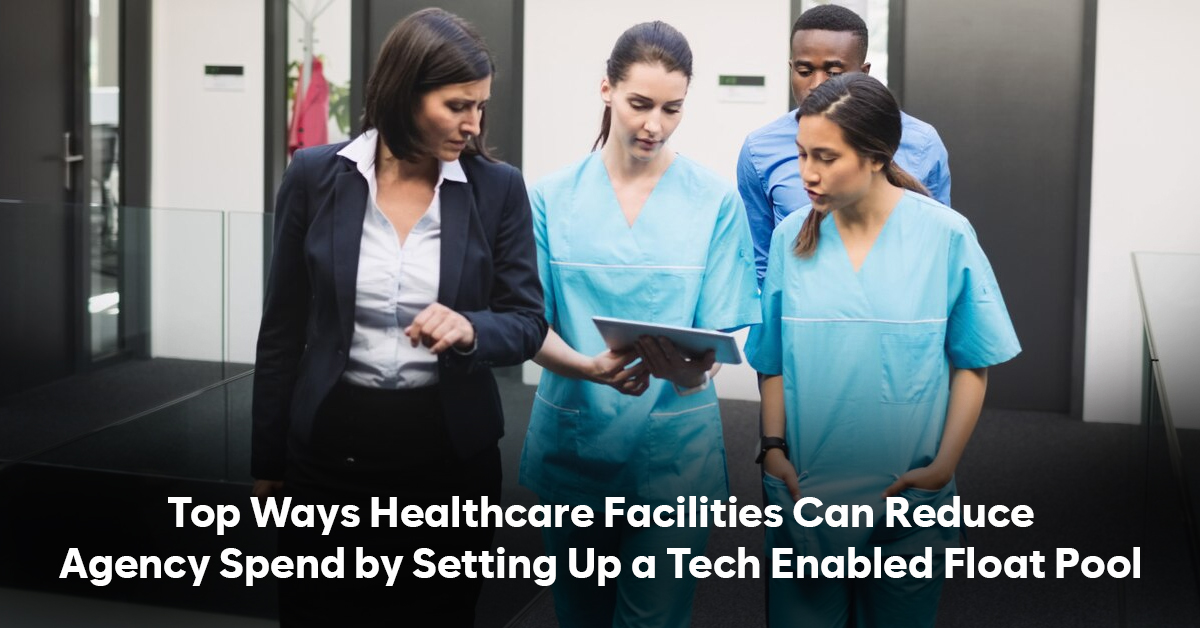In the dynamic landscape of healthcare, managing staffing needs efficiently is a perpetual challenge for hospitals and healthcare facilities. The reliance on agency staff to fill staffing gaps has become a common practice. But, it often comes at a considerable cost. One innovative solution gaining traction in the industry is the establishment of a tech-enabled float pool. This approach not only helps healthcare facilities optimize their staffing but also significantly reduces agency spending.
In this blog post, we will explore the top ways healthcare facilities can leverage technology. So, that they can create a more cost-effective and flexible workforce with a tech-enabled float pool.
1. Real-Time Resource Matching
One of the primary advantages of a tech-enabled float pool is the ability to match available staff with real-time demand. By leveraging advanced algorithms and predictive analytics, healthcare facilities can anticipate staffing needs based on historical data, seasonal variations, and other relevant factors. This ensures that the right personnel are available at the right time. Thereby, minimizing the need for last-minute agency hires and associated costs.
2. Streamlined Communication
Effective communication is paramount in healthcare, especially when it comes to managing staffing. A tech-enabled float pool provides a centralized platform for communication between administrators, managers, and healthcare professionals. Instant messaging, notifications, and alerts can be used to quickly disseminate information about open shifts, urgent staffing needs, or any other critical updates. This streamlined communication not only enhances efficiency but also reduces the likelihood of relying on costly agency staff due to miscommunication or delayed responses.
3.Skill-Based Matching
Matching the right personnel to specific needs is crucial for maintaining quality patient care. With a tech-enabled float pool, healthcare facilities can implement skill-based matching algorithms that consider the unique skills and qualifications of each staff member. This ensures that the individuals selected to fill open shifts possess the necessary expertise. Thus, reducing the reliance on agency staff who may not be as familiar with the facility’s protocols or patient population.
4. Mobile Accessibility for Staff
In today’s digital age, mobile accessibility is a game-changer for healthcare staffing. A tech-enabled float pool can be designed as a mobile application, allowing healthcare professionals to view open shifts, submit their availability, and receive shift notifications on the go. This not only makes it convenient for staff to manage their schedules but also facilitates a quicker response to staffing needs. By empowering staff with this level of flexibility and accessibility, healthcare facilities can reduce the need for agencies to fill staffing gaps.
5. Data-Driven Decision-Making
Utilizing data analytics can provide valuable insights into staffing patterns, performance metrics, and areas for improvement. By analyzing historical data, healthcare facilities can identify trends, forecast future staffing needs, and make informed decisions to optimize their workforce. This data-driven approach enables facilities to proactively address staffing challenges, reducing the reliance on reactive measures such as agency staffing, which often comes at a premium cost.
6. Continued Education and Training
A tech-enabled float pool allows healthcare facilities to create a comprehensive database of their internal staff’s skills, certifications, and training history. This information can be used to identify areas where additional training or certifications may be beneficial. By investing in the ongoing education and development of their internal staff, facilities can enhance the overall competency of their workforce, reducing the need for agency staff who may not be as well-acquainted with the facility’s practices.
7. Flexibility and Adaptability
The healthcare landscape is ever-evolving, and facilities need a workforce that can adapt to changing circumstances. A tech-enabled float pool provides the flexibility to scale staffing levels up or down based on demand. This adaptability allows healthcare facilities to respond to various factors. These include fluctuations in patient census, seasonal variations, or unexpected events without relying heavily on agency staff. Thus, by having a more flexible internal workforce, facilities can better control costs and allocate resources efficiently.
Conclusion
The implementation of a tech-enabled float pool presents a transformative solution for healthcare facilities. Facilities aiming to reduce agency spend while maintaining a high standard of patient care. Through real-time resource matching, streamlined communication, skill-based matching, mobile accessibility, data-driven decision-making, continued education, and flexibility, healthcare facilities can optimize their internal workforce, mitigating the need for costly agency staff. As the healthcare industry continues to embrace technological advancements, the adoption of tech-enabled float pools represents a strategic move towards a more cost-effective and agile approach to staffing.





